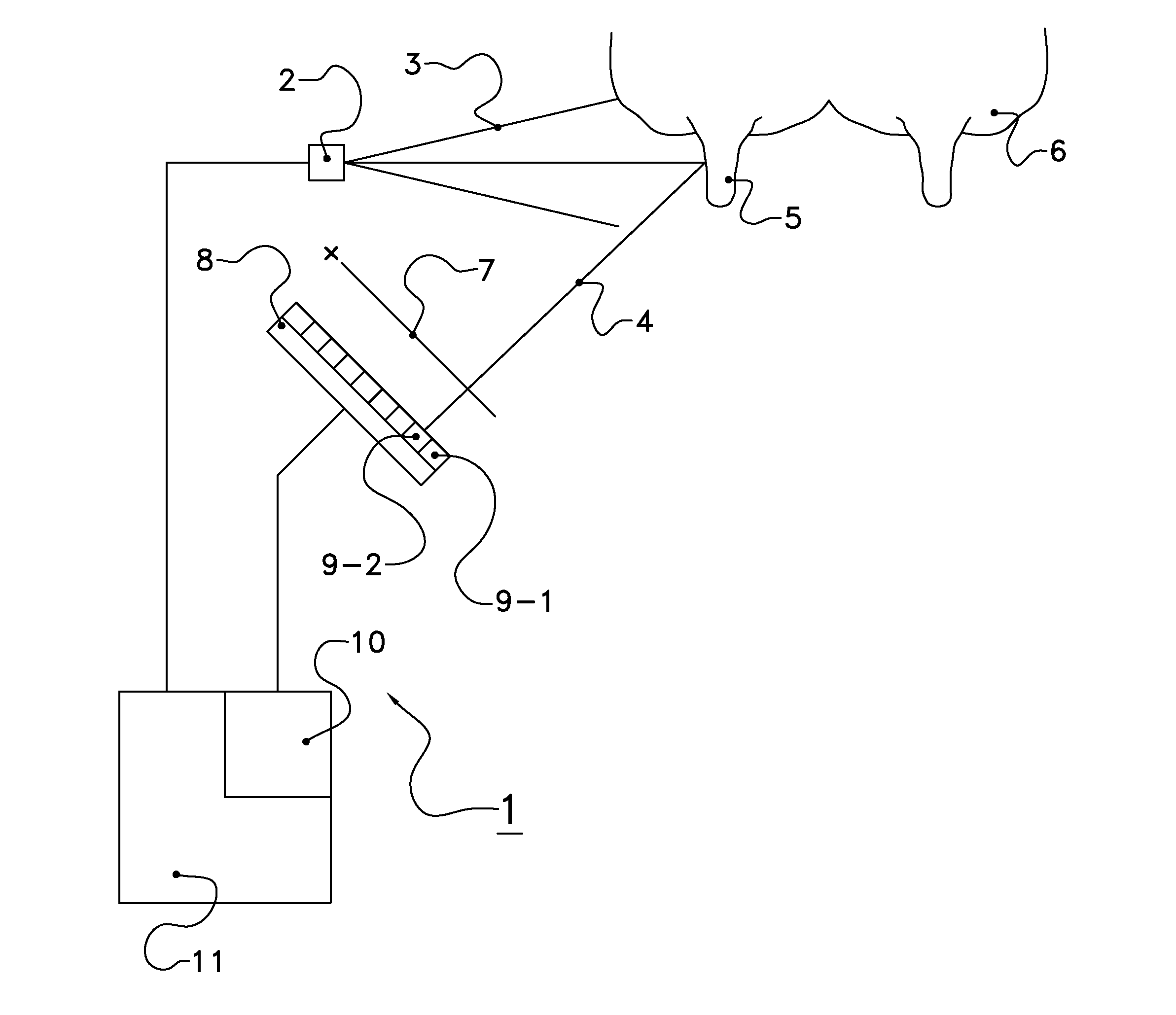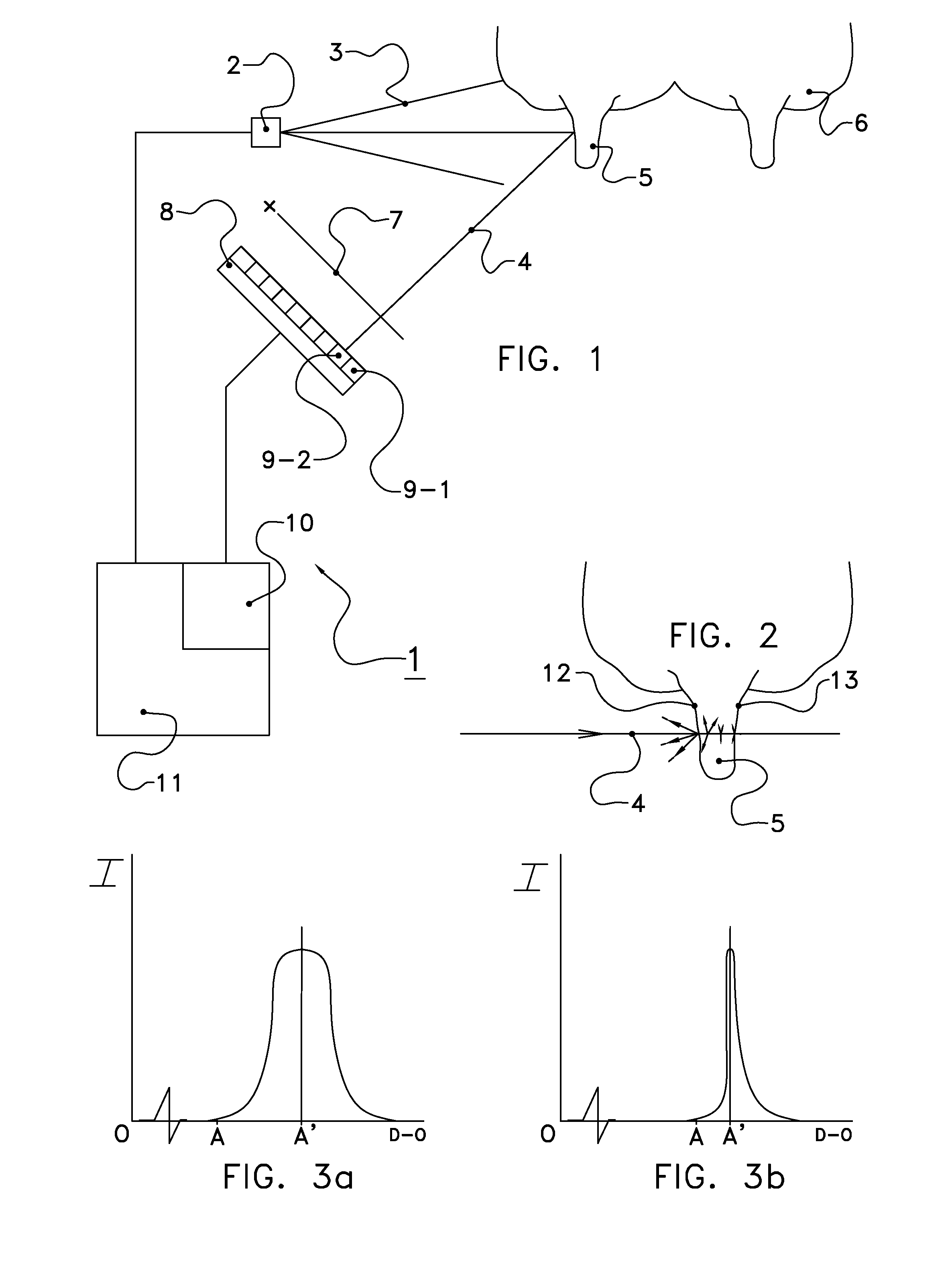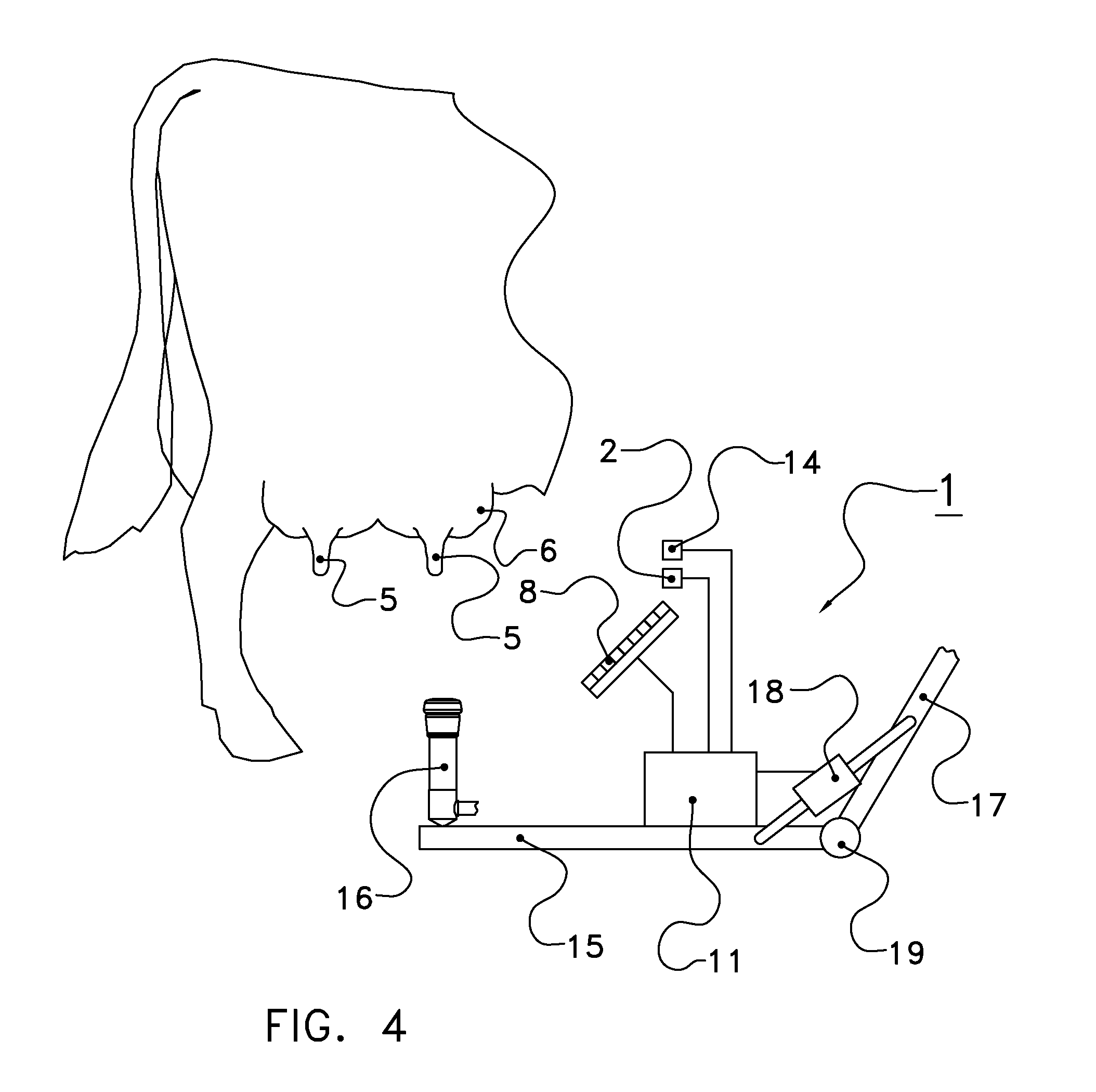Teat detection device and method therewith in a milking device
a detection device and detection method technology, applied in the field of detection devices, to achieve the effect of reducing capacity, reducing power, and increasing reliability in operation
- Summary
- Abstract
- Description
- Claims
- Application Information
AI Technical Summary
Benefits of technology
Problems solved by technology
Method used
Image
Examples
Embodiment Construction
[0030]The following is a description of certain embodiments of the invention, given by way of example only and with reference to the drawings. FIG. 1 schematically shows a detection device according to the invention. This detection device is generally denoted by reference numeral 1. Here, 2 is a light source which emits a beam of light 3 of which a light ray 4 reflects from a teat 5 of an udder 6. The light ray 4 goes via an optical device 7 to the light measuring device 8 having light sensitive elements 9-1, 9-2, . . . . By 10 is denoted a signal processing device which in this case is a component of a control device 11.
[0031]In an embodiment, the light source 2 is a LED which emits a light pulse in a beam 3. The emitted light will reflect from objects in the beam, such as a teat 5 of an udder 6 of a dairy animal in, for example, a milking box. It is possible for a light ray 4 reflected from the teat 5, after having passed through an optional optical device 7, to be displayed on an...
PUM
 Login to View More
Login to View More Abstract
Description
Claims
Application Information
 Login to View More
Login to View More - R&D
- Intellectual Property
- Life Sciences
- Materials
- Tech Scout
- Unparalleled Data Quality
- Higher Quality Content
- 60% Fewer Hallucinations
Browse by: Latest US Patents, China's latest patents, Technical Efficacy Thesaurus, Application Domain, Technology Topic, Popular Technical Reports.
© 2025 PatSnap. All rights reserved.Legal|Privacy policy|Modern Slavery Act Transparency Statement|Sitemap|About US| Contact US: help@patsnap.com



